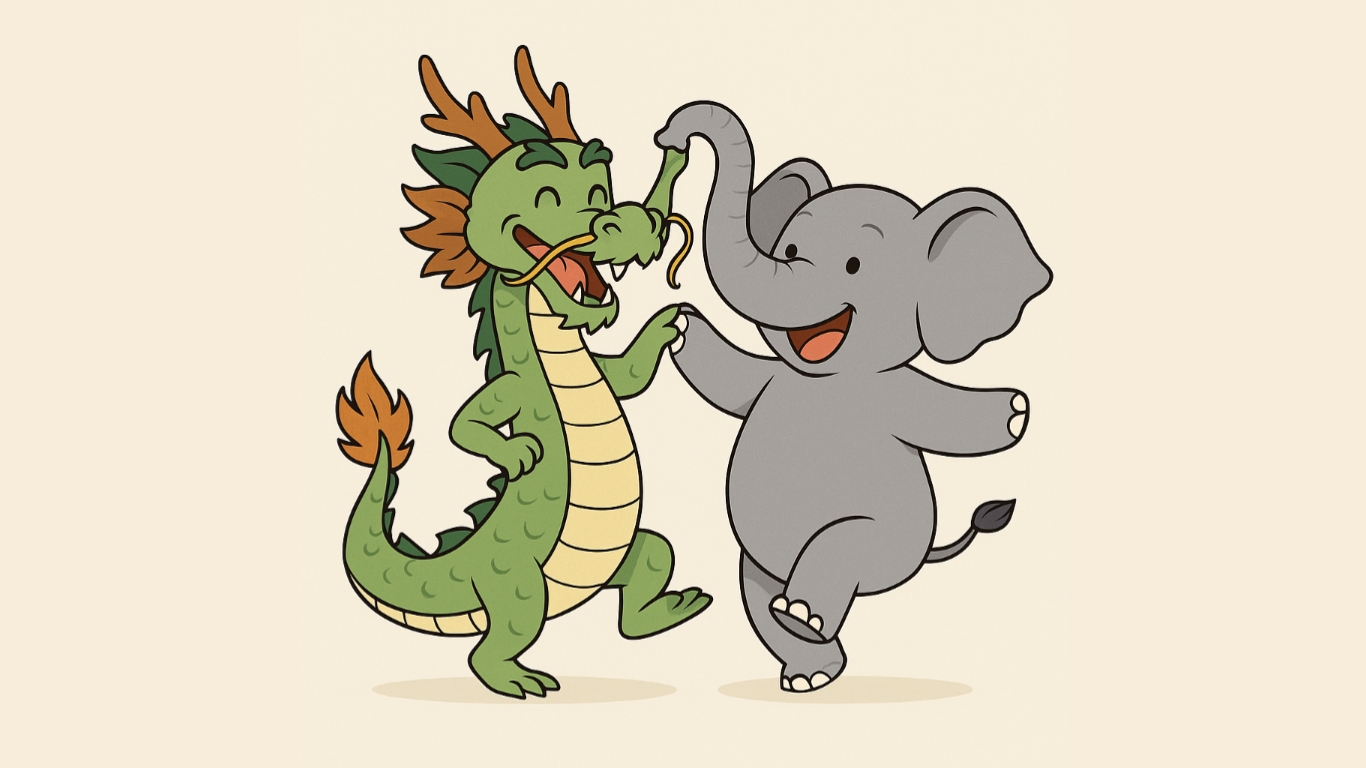A Breeze in Which the Dragon and the Elephant Could Dance Together
By Samdeep Singh · August 2, 2025

Recently, the United States has been making headlines by threatening heavy sanctions on India, China, and Brazil. Among the many rumors, one stands out — a bone-crushing tariff of 500% on imported goods. This is not just a policy move; it’s a bold attempt by the USA to flex its economic muscles and protect its local industries.
But while Washington sharpens its trade tools, this aggressive stance might trigger an unexpected alliance in the East — an alliance where the dragon (China) and the elephant (India) could start moving in step.
The reason behind these sanctions is simple: American manufacturers feel threatened by cheaper goods flooding their markets. By adding massive tariffs, the USA hopes to make imported products too expensive, encouraging people to buy American-made items instead.
However, such a move comes with global ripple effects. For India and China, who are already among the world's largest economies, this could serve as a wake-up call. Instead of relying heavily on Western markets, these countries might now look to strengthen their trade ties with each other and other emerging economies.
For years, India and China have had a rocky relationship. From border disputes to economic rivalries, the two giants often found themselves at odds. But when faced with a common economic challenge, history shows that rivals can become partners — at least temporarily.
This situation could ignite a new phase where India and China focus on building alternative supply chains, creating joint ventures, and supporting regional trade agreements that reduce their dependence on Western markets.
Of course, this is easier said than done. The path to collaboration will be filled with trust issues and political complexities. Yet, the sheer size of their economies and populations makes this partnership a tempting and strategic move.
As for Brazil, it too might find itself aligning more with Asian markets, contributing resources and opening up to new trade routes.
In the end, the USA’s attempt to protect itself could unintentionally spark a stronger, more connected Eastern bloc. Whether this dance between the dragon and the elephant becomes a long-lasting alliance or a brief step in global politics, only time will tell.
The global trade winds are changing — and this time, they might be blowing Eastward.